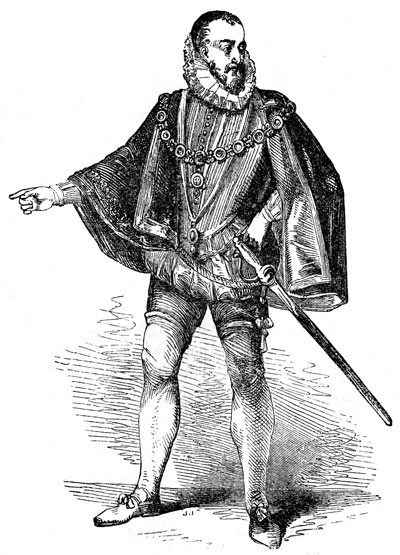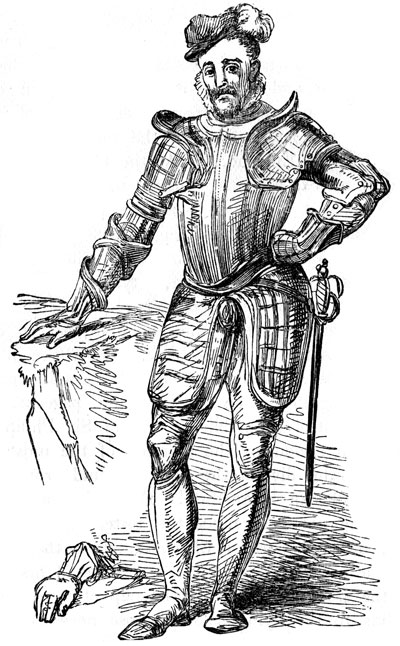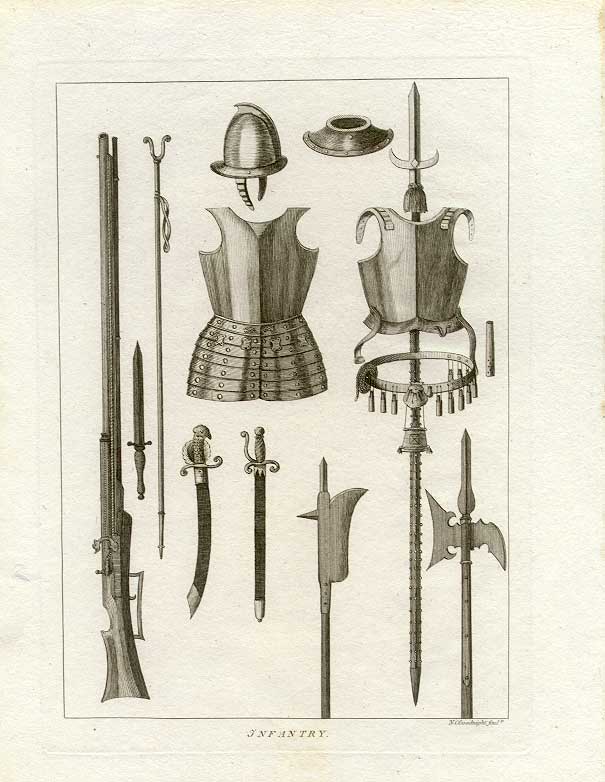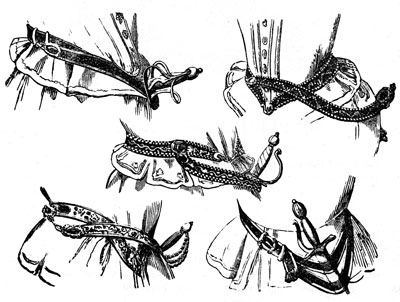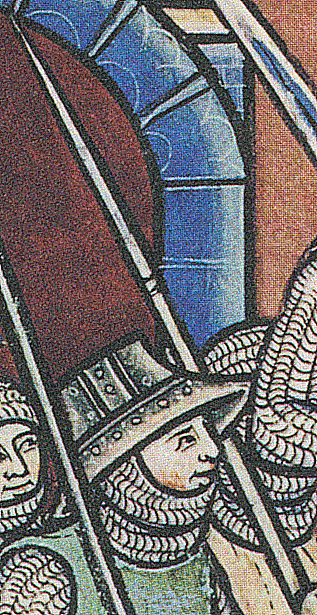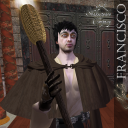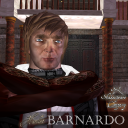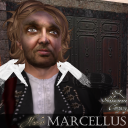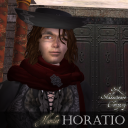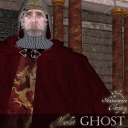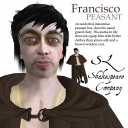Posted in clothing, 1-1 ...
Act 1 Scene 1 costume research - Marcellus
November 18th, 2007 by adaMARCELLUS: We don’t know much more about Marcellus than we do about Bernardo, except that he’s listed as an officer in all of the editions I have, seems to be on an equal footing with Horatio, and of high enough rank to address Hamlet as he does after Hamlet meets the Ghost in A1s5. Maybe a nobleman’s younger son, who is older than Hamlet, old enough to feel within his rights to advise him.
Noblemen and middle class men’s clothing had essentially the same construction, except that the nobility had much more expensive decoration. More color (dyes were expensive, though earthier tones than modern dyes), gold and silver embroidery, lace, beads, jewels. Officers who could afford it would wear more armor into battle, and also for ceremonial occasions. See illustration below for typical gentleman’s armor pieces. Note that a gentleman officer at this time would not have worn a standard uniform, which would have been associated with servant’s livery. He provided all of his own clothing and equipment, according to his taste and budget.
Armor: Parts of plate armor include the helm (helmet), gauntlets (arms), gorget (neckguard), breastplate, and greaves (lower legs). Military noblemen wore a few or all of the pieces if they owned them. Since the Ghost is described in the play as in full armor, Marcellus might have a few pieces, but should not be shown in full armor. His costume would be otherwise be that of a conservative civilian, as follows:
Shirt: Noblemen’s shirts could be literally covered in blackwork, drawn thread work, and other types of needlework, sometimes further embellished with gold thread or small beads, pearls, or gems.
Nether hose, stockings, doublet, sleeves and gloves: Same choices as for Bernardo, except with richer trim. Note that trim on doublets often follows a triangular pattern from the shoulders to the waist, which gives the illusion of broad shoulders and a narrow waistline. The backs should be decorated like the fronts. Noblemen’s clothing often has a narrower profile, perhaps to set off the more expensive materials. Less slashing, and more embroidery, jewelry, beads, and lace. Protestant men of the time wore darker colors than Catholic men, usually, so the men at Elizabeth’s court are usually depicted in rich dark colors. The play, on the other hand, shows Catholic ceremonies and depictions (the Ghost’s description of purgatory, the king seeking absolution at prayer) with the exception of the references to the University of Wittenberg, which was the think tank for the Protestant Reformation. So Marcellus could be more brightly dressed than Horatio on stage.
Cloak: Noblemen always wore them, unless they were in full armor. They are usually richly ornamented on both sides, and can have straight collars, sometimes of fur, or the entire cape can be fur lined. The shape is generally a three quarter circle, hip to waist length (full length cloaks are earlier, or for ceremonies). They had long ties to hold them on and were worn in various ways, often up on one shoulder with the ties passing under the other arm and tying across the body in front.
Hat: Most images I’ve found show the flat cap – an oval flat crown with a narrow brim., trimmed around the edges and the crown seam with narrow braid. It might also have a narrow hat band or a jeweled band called a bilament, and a single feather or a bunch of feathers, held by a badge or brooch, at one side.
Belt: For noblemen – narrow leather, elaborately tooled and gilded, with additional straps and hangers to support swords and pouches.
Shoes: The same shape as Bernardo’s, with trims, embroidery, jewels, etc., or with large rosettes of ribbon. I didn’t see any images showing noblemen wearing boots, even on horseback, but a military man might have.
Ruff: The most distinctive item of Elizabethan apparel. By 1600 they were independent garments of amazing size, and cost. Most of the military men of the period, however are more conservative, and are wearing ruffs of tightly gathered, starched lace around their necks, sometimes supported with a framework to hold them up in the back. Lace at this time was made in strips no more than 3 inches wide, either bobbin (woven) or needle lace (embroidered over a netted mesh), in geometric or abstract floral patterns. Some ruffs appear to be made of plain linen with a narrow lace edge. The band that holds the lace gatherings together was worn under the shirt and doublet.
Sword: All noblemen wear swords, as a mark of their status, usually the swept hilt rapier, worn on the left hip, if the gentleman was right handed, suspended from the belt by a leather frog.
Jewels: Men holding a governmental offices, wore a “collar of office”, a heavy chain and plaque necklace with insignia. (see image below). But the Elizabethan nobles wore jewelry on just about any visible surface – carcanets (necklace), rings, bracelets, brooches, watches, and earrings, jeweled belts, buttons, points, bilaments., pomanders, fan handles, buckles, knives, sword hilts, mirrors, hat bands, hairpins, shoes, garters, and more. Enameled gold usually, or pearls or cabochon gems (if faceted, then simple table cut) or glass beads set in gold. Stylized shapes from nature, or realistic insects, animals, flowers, plants, and mythological symbols or figures. Again, military men are more conservative.

